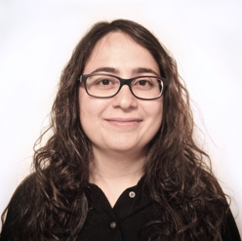October 2020: Pinar Acar

Pinar Acar
Assistant Professor
Department of Mechanical Engineering
PhD, Aerospace Engineering, University of Michigain
MS, Aerospace Engineering, University of Sao Paulo
BS, Astronautical Engineering, Istanbul Technical University
Email pacar@vt.edu
How do you see your work contributing to the goals and vision of IIHCC?
Our ultimate goal is to improve the current infrastructure that human-centered communities are using by modeling and designing materials (I am mainly working on metals and metallic alloys that are used in aerospace structures and energy harvesting mechanisms). The best way to do that, in my opinion, is to start by improving our knowledge in fundamental sciences as well as in computational modeling. We are dealing with design problems in very high dimensions that traditional trial and error approach cannot fully encompass, as one cannot try every possible combination, and that is why computational techniques are essential to designing materials.
My work is mainly contributing to multi-scale computational materials modeling as well as approaches to design optimization (an engineering design methodology using a mathematical formulation to find the optimum design of a system among many alternatives), uncertainty quantification, an umbrella term that refers to the diverse probabilistic mathematical methods and tools that are appropriate for the critical assessment of measurements, models, and simulations), and machine learning (an application of artificial intelligence (AI) that develops computer programs having the ability to learn from data and improve from experience) so that we can achieve and accelerate the design and discovery of many different materials. This investment in cutting-edge methods will make it possible to have more functional and more energy-efficient material systems in our products and our infrastructure.
What other areas outside of your discipline would you entertain for future research and proposal work?
I’ve always considered myself quite multi-disciplinary. My entire educational history is based on aerospace engineering but at the same time, starting with my Ph.D., I was involved in research on materials science, and now I am a faculty member in mechanical engineering and we collaborate with lots of people and disciplines because of the way we are implementing various computational concepts. For instance, when I say, “design optimization” and “uncertainty quantification”, these involve generic concepts and methods that are already utilized in other fields, not specific to materials. Therefore, it helped me coming from a different discipline because aerospace engineering and materials science have different visions, which is why I can develop novel computational tools and apply them to materials research.


